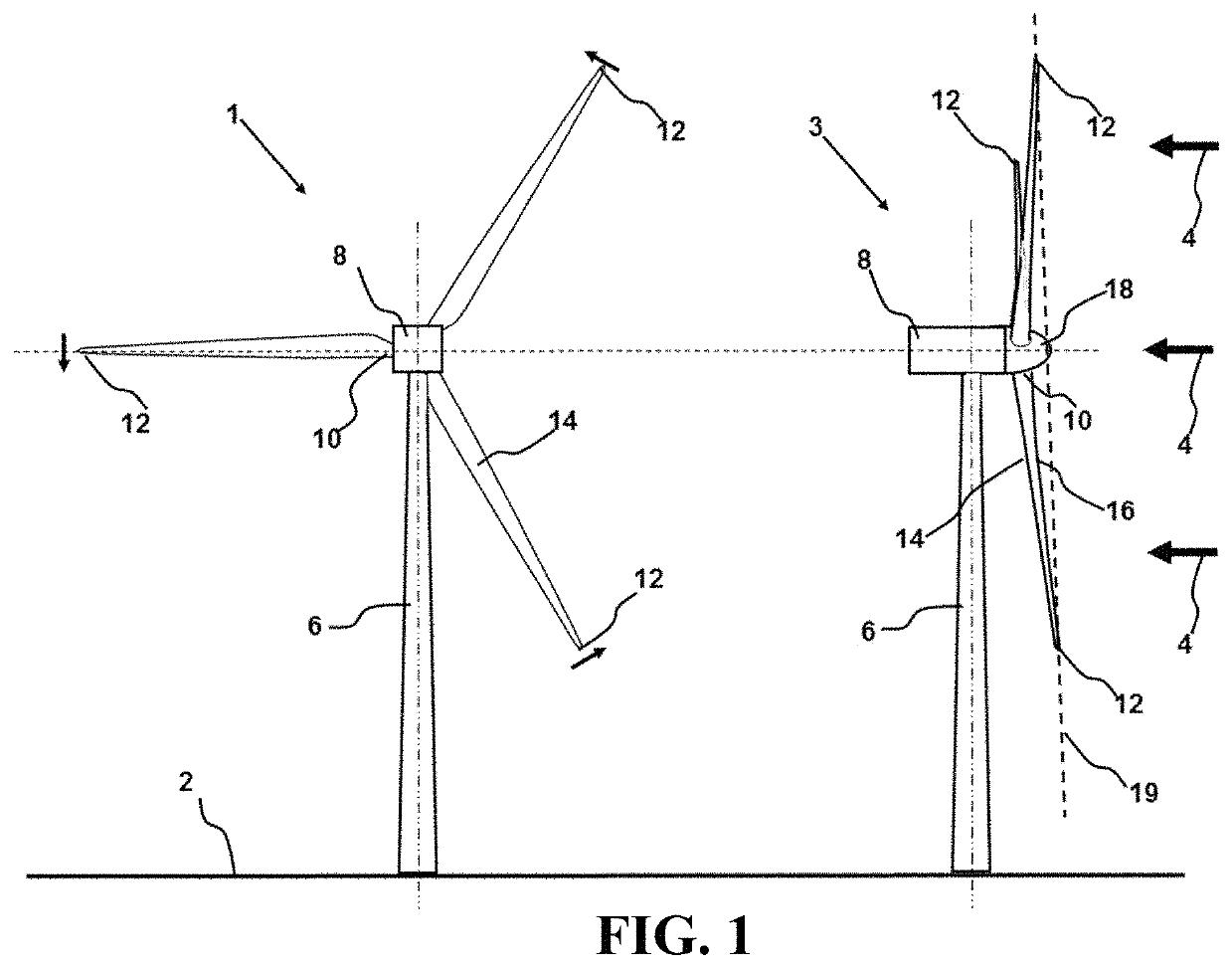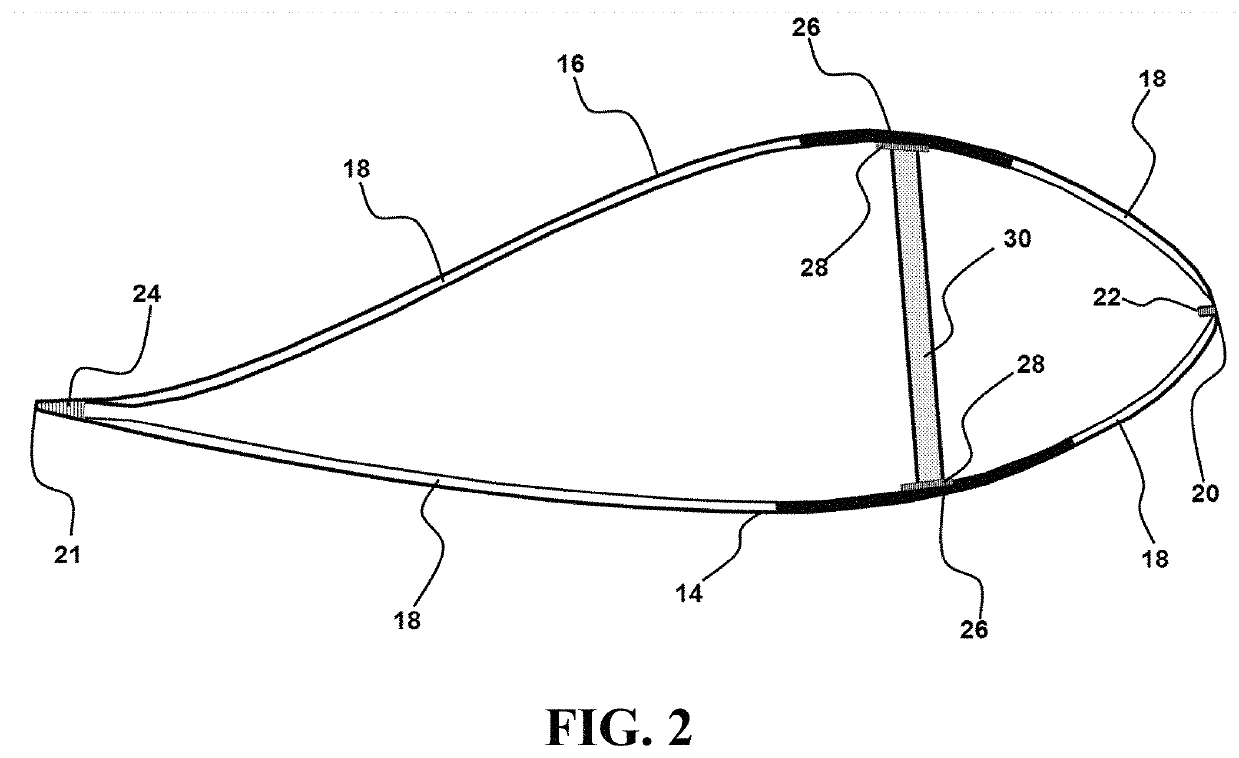Method and apparatus for contrast enhanced photography of wind turbine blades
a technology of contrast enhancement and wind turbine blades, which is applied in image enhancement, instruments, machines/engines, etc., can solve the problems of false positives and false negatives, difficult non-destructive inspection of wind turbine blades, and inability to identify defects below the surface of the outer skin of the wind turbine blade, etc., to achieve high contrast, reduce glare, and high resolution
- Summary
- Abstract
- Description
- Claims
- Application Information
AI Technical Summary
Benefits of technology
Problems solved by technology
Method used
Image
Examples
Embodiment Construction
[0022]Certain terminology is used in the following description for convenience only and is not limiting. The words “right”, “left”, “lower”, and “upper” designate directions in the drawings to which reference is made. The words “inwardly” and “outwardly” refer to directions toward and away from, respectively, the geometric center of the device and designated parts thereof. The terminology includes the above-listed words, derivatives thereof, and words of similar import. Additionally, the words “a” and “an”, as used in the claims and in the corresponding portions of the specification, mean “at least one.”
[0023]Referring now to the drawings, wherein like reference numerals indicate corresponding structure throughout the views, and referring in particular to FIG. 1, provided is a schematic diagram of a horizontal axis wind turbine (HAWT) that is typical of both land based and off-shore turbine generators. The view 1 from behind the turbine facing the wind includes tower 6 extending up ...
PUM
 Login to View More
Login to View More Abstract
Description
Claims
Application Information
 Login to View More
Login to View More - R&D
- Intellectual Property
- Life Sciences
- Materials
- Tech Scout
- Unparalleled Data Quality
- Higher Quality Content
- 60% Fewer Hallucinations
Browse by: Latest US Patents, China's latest patents, Technical Efficacy Thesaurus, Application Domain, Technology Topic, Popular Technical Reports.
© 2025 PatSnap. All rights reserved.Legal|Privacy policy|Modern Slavery Act Transparency Statement|Sitemap|About US| Contact US: help@patsnap.com



